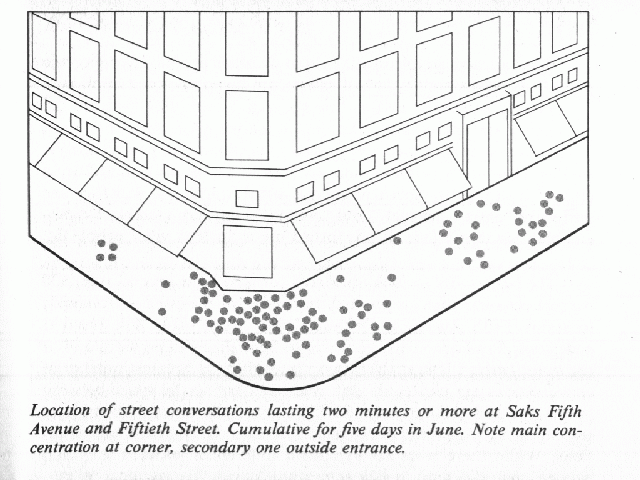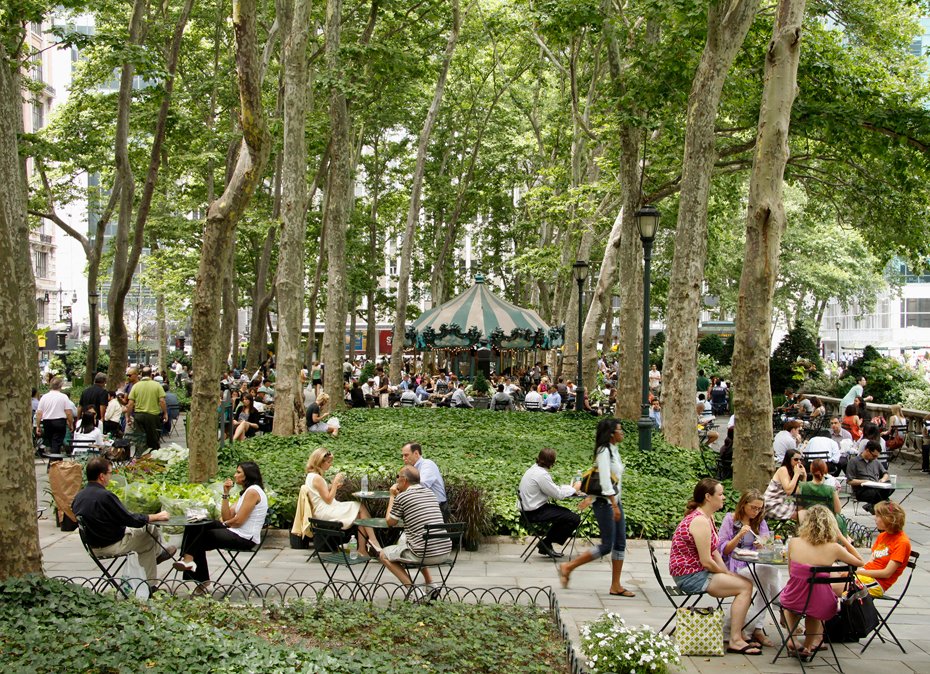
A New Look at Us in Cities
William H. Whyte might have been one of the most influential non-architects to transform the way we think about urban spaces all around us. He was a sociologist and writer of the 20th century, mostly concerned with the way corporations were run. But in the 1960s while he was working at the New York Planning Commission, he was tasked with understanding the behavior and nature of urban settings. So, he took the streets with video cameras and a documentation team.

Recording Seagram Building Plaza
The result of his on-the-ground research was a series of books dedicated to understanding the way we use our parks, plazas, streets, and every part of the open city and landscape. For us as designers, his most recognizable work was a classic film that came out of all this - The Social Life of Small Urban Spaces, 1988
In the film, Whyte records and narrates the way pedestrians use the city - how we congregate in plazas, how circulation works, how we react to certain elements like fountains and public benches, and all the other ways human nature plays out in our fabricated world.


Architecture has always leaned more towards art than science in recent decades and designers are more prone to concerning themselves with the quality of what they’re making. But William Whyte brought around a whole new sensibility of what design is by utilizing documentary film and a whole array of documentation techniques (surveys, workshops, etc.). Architecture was showcased as more of an observatory science so that we could finally start to understand the impact that architecture had on daily human activity and eventually mold the way we inhabit cities.
Applying a New Perspective
My profession as a landscape architect has been particularly impacted by the way Whyte has framed space. Much of design in our real is infrastructural or meant to host large groups of people and we’re less concerned with private areas for a select few. As such, we have to design with the quality of a larger audience and wider usership.
I believe that these concepts are important for any kind of making or design or creativity of course. We’re ultimately making for people and the ‘success’ of work will be determined by how those people use it. Rather than judging something based on aesthetics or reasoning, getting direct and indirect feedback by the public has been one of the most useful inputs for design professionals.

Bryant Park NYC 1991 courtesy Olin Studio
What do you think? Should all designers adopt this mentality?
Here you can watch the classic Willam Whyte's The Social Life of Small Urban Spaces.
@Mintvilla, an ever-learning landscape architect

